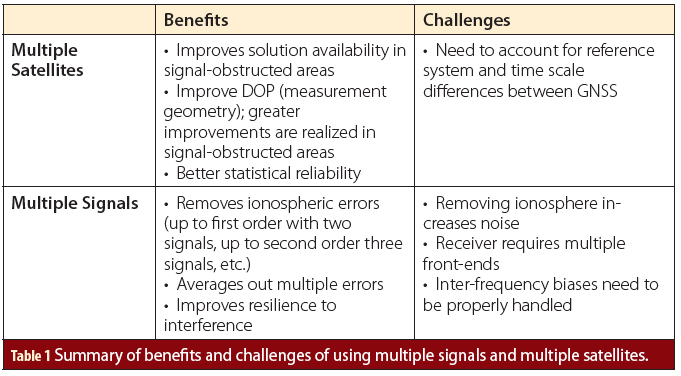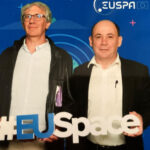 Wikimedia Commons
Wikimedia CommonsThe S-Bahn from Munich’s airport rolls through the frigid Bavarian fields and suburbs toward the main train station — my jumping off spot for the Munich Satellite Navigation Summit.
On its front page, the Frankfurter Allgemeine newspaper laments the return of winter to Germany just as the crocuses had managed to push their heads through the frozen earth, and on our night-time approach to the airport the lighted villages amid the snowy landscape evoke thoughts of Christmas more than Easter.
But enough with the weather report.
The S-Bahn from Munich’s airport rolls through the frigid Bavarian fields and suburbs toward the main train station — my jumping off spot for the Munich Satellite Navigation Summit.
On its front page, the Frankfurter Allgemeine newspaper laments the return of winter to Germany just as the crocuses had managed to push their heads through the frozen earth, and on our night-time approach to the airport the lighted villages amid the snowy landscape evoke thoughts of Christmas more than Easter.
But enough with the weather report.
Thinking ahead to the panel in which I’m speaking, “Bridging the Gap: A Journalistic View on the Progress and Problems of GNSS.” A clutch of journalists from Europe, India, and the USA will act as a kind of tail-gunner crew in the Summit’s final thematic session, taking a last few shots at the subject as everyone flies away home.
I’m also looking forward to seeing our Working Papers column editor Günter Hein again.
Now, most people consider Prof. Dr. Hein a very technical guy and politically savvy — and they’re right. An occasional consultant on Galileo matters with German Chancellor Angela Merkel, key member of the European GNSS signal task force, a moving force behind GNSS simulator and receiver manufacturer IFEN GmbH, and long-time head of the Institute of Geodesy and Navigation at the University of the Federal Armed Forces, Munich.
Now he’s over at the European Space Agency heading up its Galileo Evolution Program.
Eight years ago, Günter saw an opportunity to create a high-level gathering of industrial, technical, GNSS program, and political leaders. Unlike the European Commission–fostered GNSS/European Navigation Conference whose fortunes rise and fall as the ENC travels among the EU nations and institutes of navigation that host it on a rotating basis, Günter envisioned a stable but evolving event under a single administration, staged permanently in the remarkable venue of Munich’s Residenz.
And so the Summit was born.
Right now, however, the thing that thing that comes to mind is Günter confiding to me six or seven years ago that the day was coming soon when we’d have “downloadable GPS.”
At first I thought that he was referring to software receivers or firmware that could be upgraded over telecom channels much as the U.S. Defense Department is introducing over-the-air keying of its encrypted military receivers. Without the silicon, what would become of GNSS?
But his observation really had to do with the kinds of location- and navigation-based applications now flying off the virtual shelves at Apple’s iPhone store. I don’t know if Günter had quite that phenomenon in mind – I’ll have to ask if he has any pre-iPod Apple stock. But Apple has implemented a successful e-commerce model that has flattened out the price structure, encouraged innovation based on user-generated content, and diversified the universe of applications — pushing all of these phenomena deep into the GNSS domain.
And, above all, from the perspective of the buying and using public, GPS — a functionality already hidden on the hosted CPUs of phones and mobile devices not fundamentally designed for navigation or location services — continues to disappear into the application.
Inside GNSS editor Glen Gibbons is blogging from the Munich Satellite Navigation Summit 2010.





